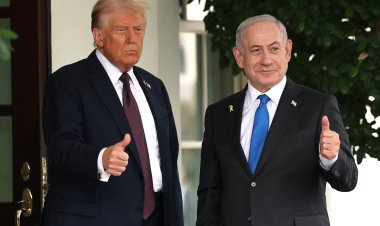Explained: The Nagorno Karabakh Conflict
The reignition of a 3-decade long conflict. So far Armenia and Azerbaijan have agreed to end military operations in and around Nagorno-Karabakh in a ceasefire brokered by Russia.

By Usanas Foundation
What and where is Nagorno-Karabakh?
A mountainous region nestled in-between Asia and Eastern Europe with a population of 150,000 people have emerged as one of the most volatile conflict zones. Internationally recognized as part of Azerbaijan, the region is governed by Armenian separatist groups. Post the collapse of the Soviet Union in the late 1980s, the area’s legislature passed a resolution stating it officially wanted to join Armenia despite its location inside Azerbaijan. Three years later the territory declared itself independent, in the absence of the Soviet control what resulted out of this was a war that ended in a ceasefire and killed around 30,000 people in 1994.
What are the recent developments?
The 32-year-old struggle was set off once again on 27th September when the Azerbaijani military bombed civilian settlements in Nagorno-Karabakh, Stepanakert has also faced serious artillery firing by Azerbaijan. It has also been claimed that Armenia shelled Ganja, one of its largest cities. Russia estimates that approximately 5000 people have been killed so far. While disputes have existed throughout the period most lasted only for a few days. What is different this time around is that both the countries have proclaimed martial law.
During days of border fighting in mid-July, Armenia killed seven Azerbaijani service members, later that month, Turkey joined Azerbaijan for two weeks of military drills which were billed as an annual exercise. The message it portrayed was however extremely clear, one where they were ready to fight.
The Armenian government has lodged a request with the European Court of Human Rights (ECHR) for an interim measure against Azerbaijan. They have requested the court to indicate to the Azerbaijani government to cease the military attacks towards the civilian settlements.
Why is this region important?
For Armenia, the existence of ethnic Armenians in Nagorno - Karabakh is threatened by Azerbaijan. However, Armenia is much more satisfied with the existing arrangement. A region governed by ethnic Armenians acts as a buffer zone in case of ground attacks by Azerbaijan.
Bringing back the mountainous region into its fold is sacred to Azerbaijan as a country and is also a deeply personal issue for the thousands of internally displaced people who are scattered throughout the country. This is all that will allow them to send thousands of disgruntled, displaced people back to their homes.
What role do Turkey and Russia play?
Turkey has three major reasons to be involved in the conflict; both Turkey and Azerbaijan share common ethnic, religious, and linguistic identities, they have also become a major gas exporter to Turkey, and lastly, Turkey sees this as a strong platform to utilise if it wants to play a greater role in the region. This vested interest and weaponizing carried out by Turkey further triggers Russia who also plays a key role in the region.
Russia has military ties with Armenia through The Collective Security Treaty Organization, but it also maintains a healthy relationship with Azerbaijan. Throughout history, Russia has played the role of a referee and kept both sides at bay. They have called for diplomatic interventions from either side and this stance has remained up until now. However, the possibility of Russia siding with Armenia is not bleak. This could have further repercussions such as a NATO ally being pitted against Russia.
Other countries, including the US, have limited their participation in their efforts to maintain peace in the region. For all countries, the region is an important transit route for the supply of oil and natural gas to the European Union.
What does the future look like?
While the global community wishes for an end to the conflict, the stances of the two leaders leave barely any hope for us. While Armenia is ready to allow space for concessions Azerbaijan is not ready to do so. For Azerbaijan, the goal is the liberation of territories they see as rightfully their own. So far Armenia and Azerbaijan have agreed to end military operations in and around Nagorno-Karabakh in a ceasefire brokered by Russia. The war has altered the balance of power in favour of Azerbaijan. The conflict has not ended, it has only been postponed. Experts see only two probable ends to the conflict, either a ceasefire that puts Turkey at a superior position or a long drawn war with the potential of ethnic cleansing. The involvement of external forces such as Turkey and Russia only further exacerbate the situation.
(With inputs from Diya Shilin, Research Assistant, Usanas Foundation)
























